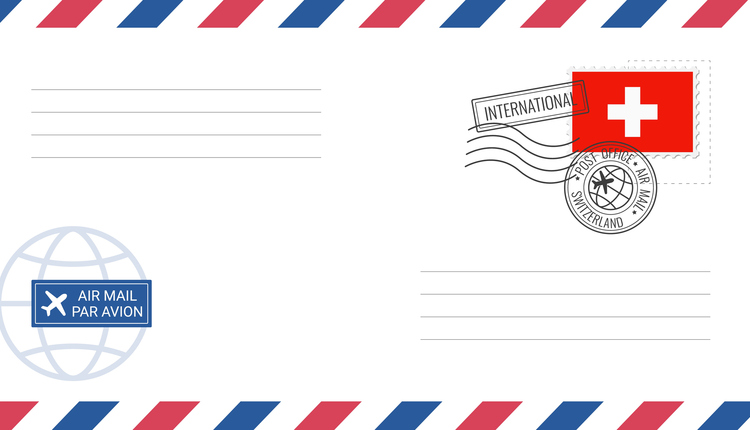This article originally appeared in the January/February, 2018 issue
of Mailing Systems Technology.
Canada has long been a market for US products, and the popularity of e-commerce makes the Great White North even more attractive. Mail remains essential in Canada, with its large size and scattered populations. It continues to be crucial in commerce, from acquisition to fulfilment to billing. A 2016 review by the federal government indicated 94% of Canadians believe mail is important, with 91% reporting satisfaction with Canada Post Corporation (CPC).
The mail industry in Canada is a significant economic force, representing approximately $88 billion (CAD) in annual revenue and employing more than 800,000. The industry itself makes up between 80 and 90% of CPC’s annual revenues. There are close ties between the US and Canadian mailing industry members, with mail flowing across the border daily and well-established processes for entry.
A Look at Our Neighborly Differences
Although the Canadian postal system looks similar to the US, there are significant differences mailers need to take into account. Like with the USPS, there are regulated versus non-regulated products impacting price setting. However, CPC is a Crown corporation — a rather peculiar organization. It is structured as a private corporation, making it, in theory, at arms-length from government influence. However, the federal government is its sole shareholder and the company, like private ones, needs to ensure its shareholder is happy. Thus, political influences are at play.
The Canadian system uses metric measurements such as grams and millimeters (but is fluent in imperial!) and operates in both official languages (French and English). The postal imprint or indicia must be bilingual. Delivery is Monday through Friday and subject to statutory holidays. Then, there is the alphanumeric Postal Code with its space in the middle, causing headaches in US systems built for numeric ZIPs.
Mail classes resemble those in the US, although minimum volumes are higher. USPS First-Class Mail is equivalent to CPC’s Lettermail and its discounted Incentive Lettermail for transactional pieces. Personalized Mail is for promotional pieces, equivalent to USPS Marketing Mail. Publications Mail is equivalent to Periodicals Mail, although publishers will be happy to know the Canadian version is far simpler than the complex USPS offering.
CPC has two mail classes not found south of the border. Neighbourhood Mail (NM) is advertising mail with no name or address. Mailers select carrier walks, and pieces are delivered to every address within that walk. It is well-established and used in Canada.
A Deeper Look at Canadian Mail
The newest mail class, Postal Code Targeting (PCT), officially launched in February of 2017. An acquisition offering, it allows mailers to target recipients at the Postal Code level. Mailers can receive a list of “like” prospects to postal codes they submit, suppress existing customers, and add seeds. It is printed by mail service providers (MSPs) with an indicia and 2D barcode with the delivery address sprayed by CPC during the sort process.
Discounted postage rates are available by preparing their jobs as either machineable or presorted (special handling). These names tend to confuse new mailers, as they do not mean the same thing as in the US. Presort is used primarily for oversize pieces for Personalized and Publications Mail. Machineable preparation is used with Incentive Lettermail, Standard Personalized Mail, and Publications Mail. PCT is a form of machineable mail with more stringent specifications.
Machineable refers to the ability of a mail piece to successfully pass through sorting equipment. Pieces must be both machineable and readable. Machineability is determined by physical characteristics (size, weight, shape, sealing, flexibility, and enclosures). Pieces not meeting machineability specs may stick together or jam in machines, resulting in damage. Readability measures scanners’ ability to find and recognize the address and is influenced by clear space, shifting within a window, paper and ink with related smudges, skews and contrast, font, and physical address location. There is no sorting or bundling requirement for machineable mail.
Improving the Mail Process
CPC and the mailing industry have been working to improve the efficiency of preparation and delivery while reducing complexity. To this end, there have been numerous changes recently; the following will summarize the most important.
Agreements are not required to access Incentive Lettermail rates if the mailer has a CPC customer number, uses electronic shipping tools (EST) to produce documentation, and meets the minimum volume requirement. This was a pain point for many mailers and their MSPs.
Machineable mail requires a static 2D barcode in the indicia. An optional 2D barcode can be used to ensure delivery if the address is not readable, with 21 characters for mailer use. Volume requirements have dropped to 400 pieces for Personalized Mail.
Personalized Mail had several improvements. Customized indicia are now available at no additional charge and without pre-approval. The “return to sender” option was modified to an upfront $0.01 per piece on the full mailing rather than the much higher per-piece rate on returns. There was an increase in maximum thickness of dimensional pieces to 60mm (2.36”).
Publications Mail had very exciting changes, increasing value to publishers’ mailers. Catalogues may now be included without separate charge, adding only to the incremental weight. Sample pricing was simplified; attached samples incur only incremental weight charges, and enclosed samples are $0.10 each plus incremental weight. These changes allow increased revenue generation from advertising with little or no increase in postage.
Undeliverable Publications Mail (uPM) pieces are charged a return fee; however, many pieces had valid addresses but no explanation for lack of delivery. CPC made changes in uPM handling, so mailers now pay only for returns with non-valid addresses, reducing fees for many publishers.
A new class of Publications Mail was added for standard-size publications at a lower price point in recognition that all publications were being charged as though they were oversize even if they weren’t. This class is good news for standard-size publications.
Neighbourhood Mail specs are now better aligned with the flyer industry, allowing pieces to be bigger and heavier. Delivery speed is being increased by up to two days, allowing better in-home estimates for mailers. Bundles of NM are now being measured by maximum height (6” for <500g and 8” for items up to 1kg) rather than maximum number of pieces.
Since its launch, PCT has been undergoing fine-tuning based on consultation with the National Association of Major Mail Users (NAMMU) and MSPs. The $0.30 per piece product includes some data services and postage. Mailers use an MSP, who is provided unique 2D barcodes to print but no address. PCT is potentially an excellent acquisition product. and NAMMU is working with CPC on improvements including reducing time from concept to creation. Contracts are no longer required, indicia chevrons have been removed, and quiet zones have been tightened for more creative real estate. Work is still required to mitigate risk to MSPs, but the concept is solid for acquisition mailings.
Whether B2C or B2B, direct mail is important in reaching Canadians. More than 87% of Canadians open mail addressed to them, and 2/3 read advertising mail and catalogues (even more impressively, 75% of millennials do so!) -- more if you add samples or coupons. Whether you are looking for cross-border shopping, tourism dollars, or a piece of the US $19 billion in e-commerce purchases made by Canadians, mailing to Canada is worth a closer look. Mail, especially advertising and acquisition mail classes, are simpler than the USPS and it is easy to get started. Take a look north of the border — we’re open for business!
Kristi Kanitz is GM, Flagship Software Ltd. She also serves as Chair, Board of Directors, National Association of Major Mail Users (NAMMU). Contact her at kristi@flagshipsoftware.com.











